Size comparison with 3 other 6x18650 lights.
From left. Warrior (basically SRK size), Fandyfire SL3 (currently a project light), RC40, Fenix E15 (16340), "Retard light".
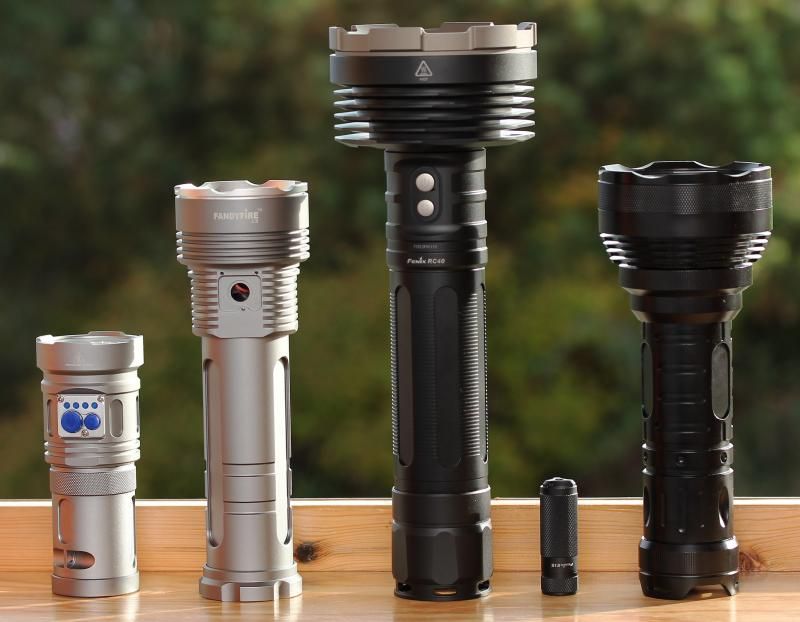

Lets take a closer look.
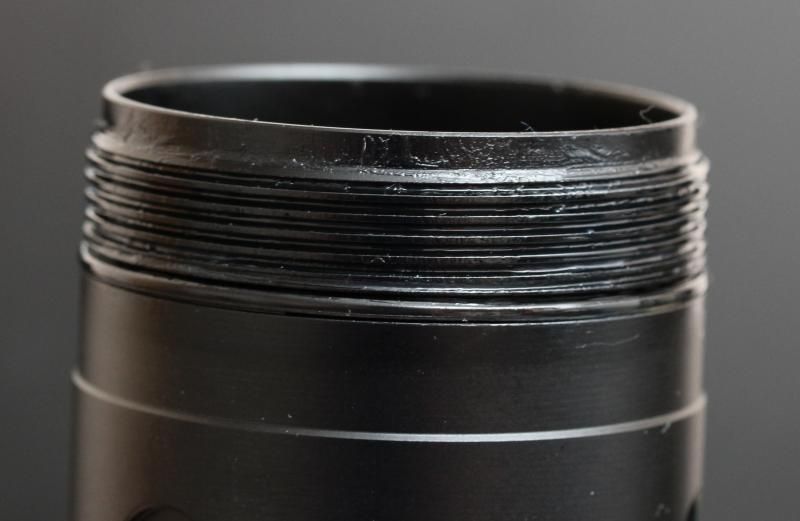
Battery pack is similar on both sides. Positive in the middle.
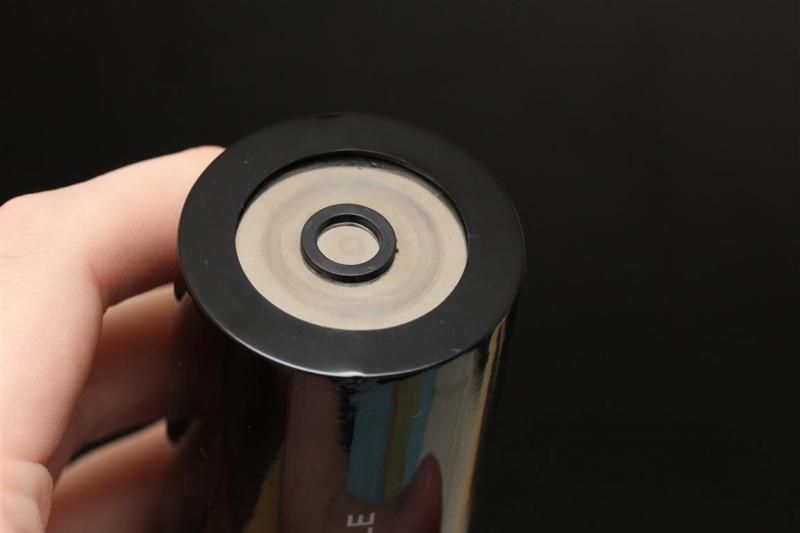
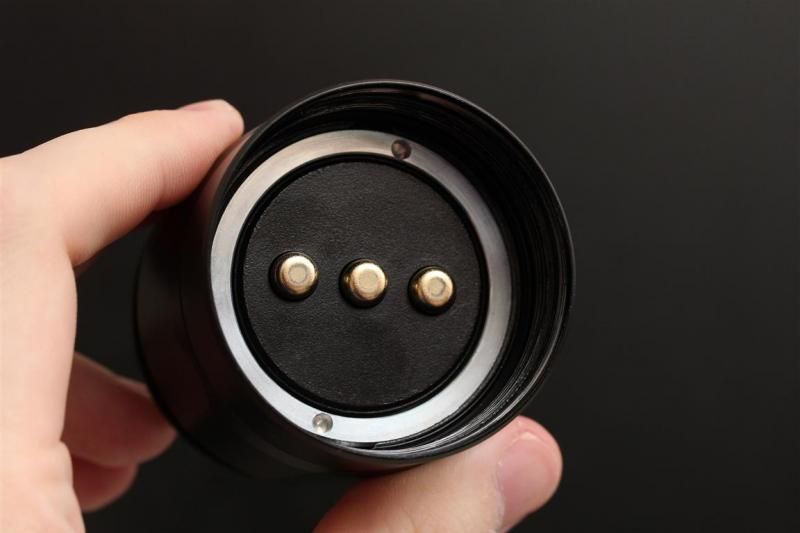
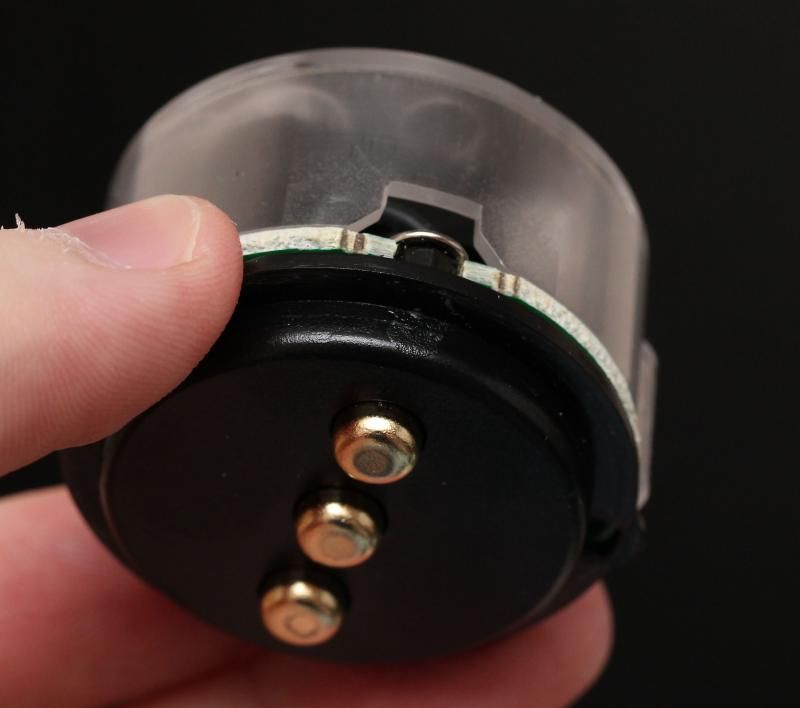
Here are the four battery indicator lights, button for activating them, and charging port.
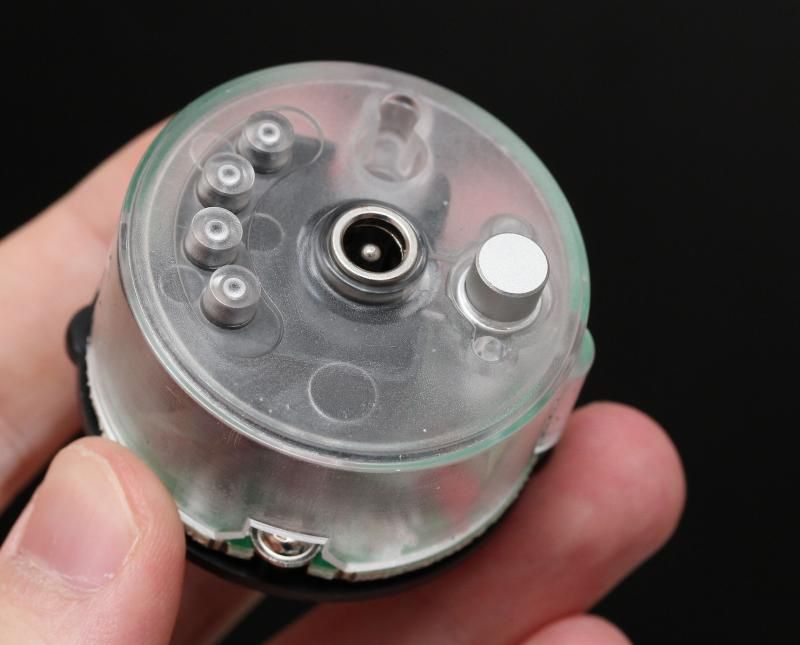
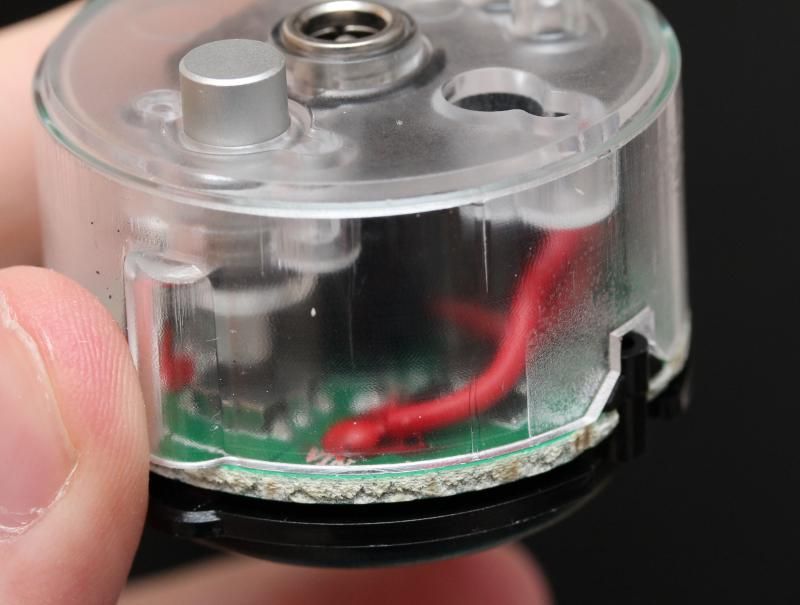
Bezel can be unscrewed with strap wrenches by hand. A good amount of force is required.
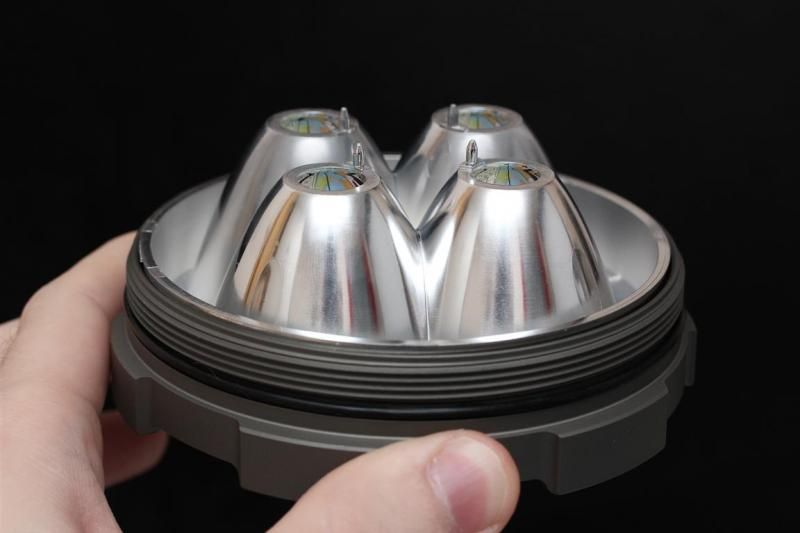
Considering the battery voltage and the 2s2p emitter configuration, this light could probably be rebuilt with a zener modded FET driver without too much work. I believe charging and battery monitoring would still work. (Unless the protection on the battery pack would cause issues, I have not measured that. Either way, probably something that can be overcome if its an issue.)
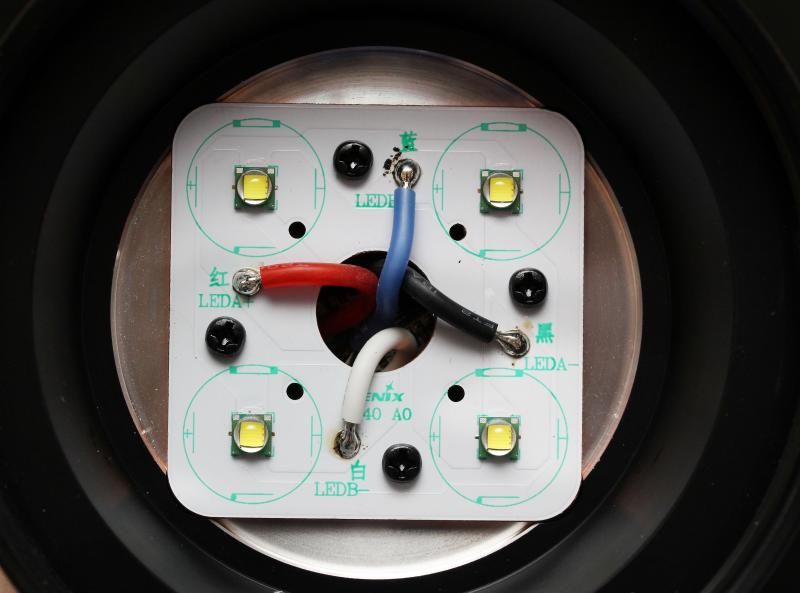
The light is well regulated though, so a linear driver may not be an attractive replacement. 3A at the emitter even with quite low battery voltage. Typical for large Fenix lights. Well regulated, well driven, but not overdriven. With latest gen XM-L2 this should be good for more than 4000 lumen OTF with the stock driver. And that will go pretty much all day on full output. Until the battery is empty that is.. Which does not happen suddenly due to dimming output at the end.
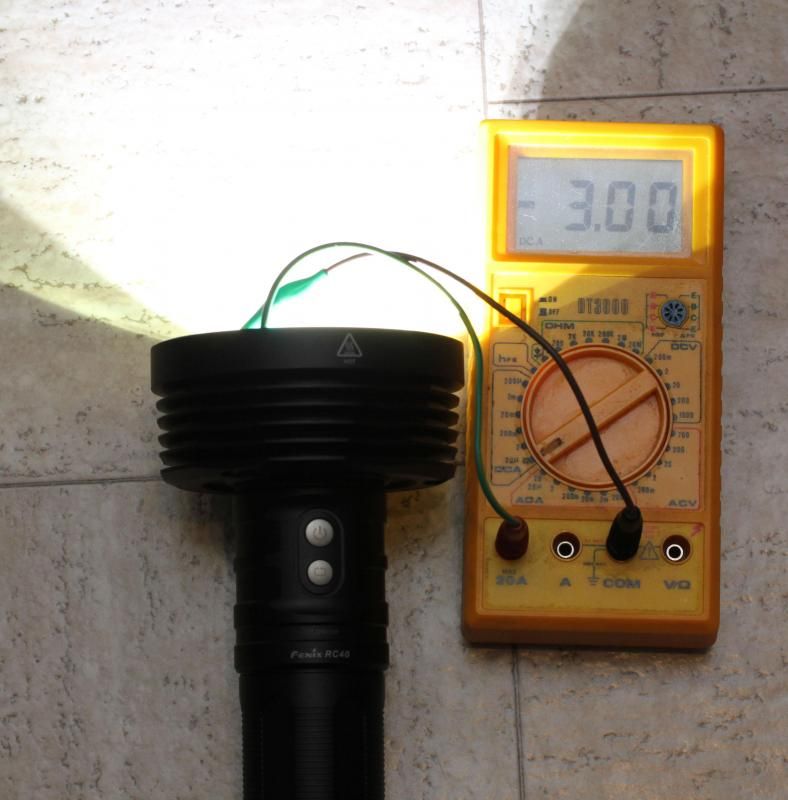
Disappointing amount of thermal grease, but it did not matter. A 30 min max output indoor tailstand test without cooling only showed about 250 lumen drop. Which is natural heat sag when the hottest part of the light goes from around 23 C and to close/around 60C. Aluminium below emitters are not thick, but certainly adequate. The light is built like a lightweight where it can be (plastic high quality reflector, no excessive amount of aluminium in the middle of the "pill/head"). But in general its built like tank with massive heatsink fins, oversized wires, massive well secured copper mcpcb, etc...
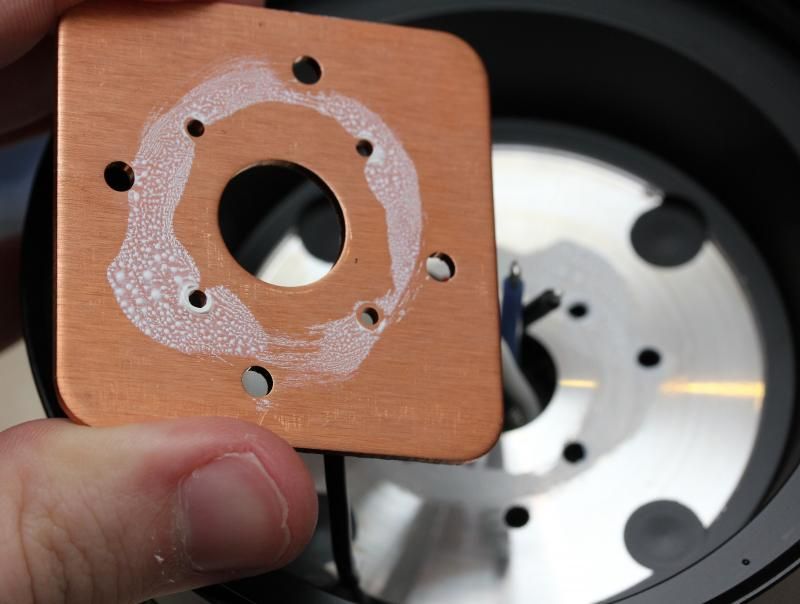
Fenix does not what you to open this light! I had to attach the light in a vise and use both my hands in combination with two strap wrenches. Pushing from me with one hand, and towards me with the other. Using all my force!
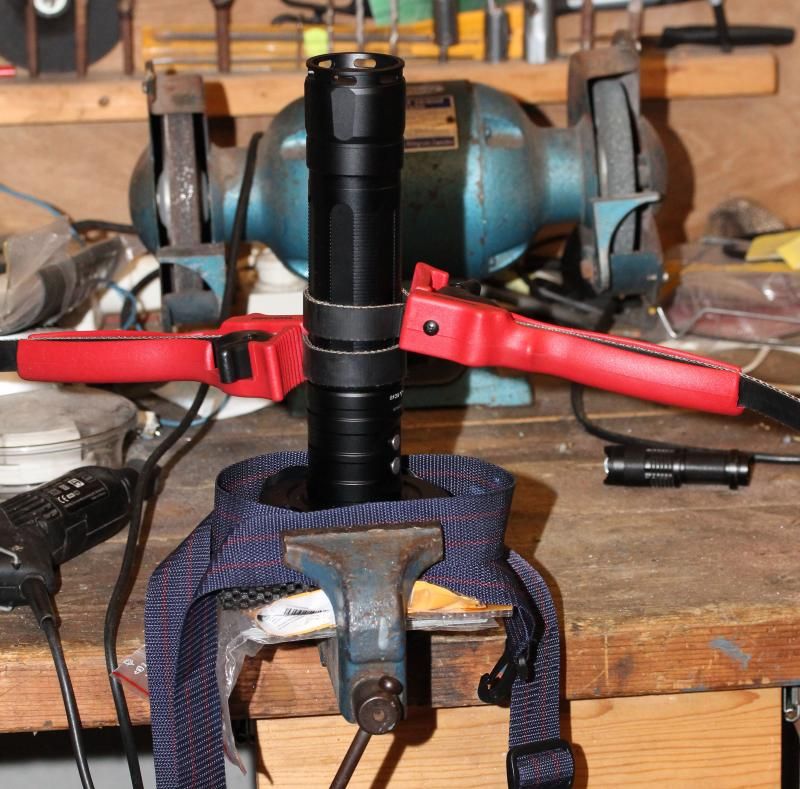
Blue loctite or whatever they used must have been free the day the light was assembled. :D
That is a new record for me.. Before you think; "That is not bad, all those threads were not even properly covered with the stuff."
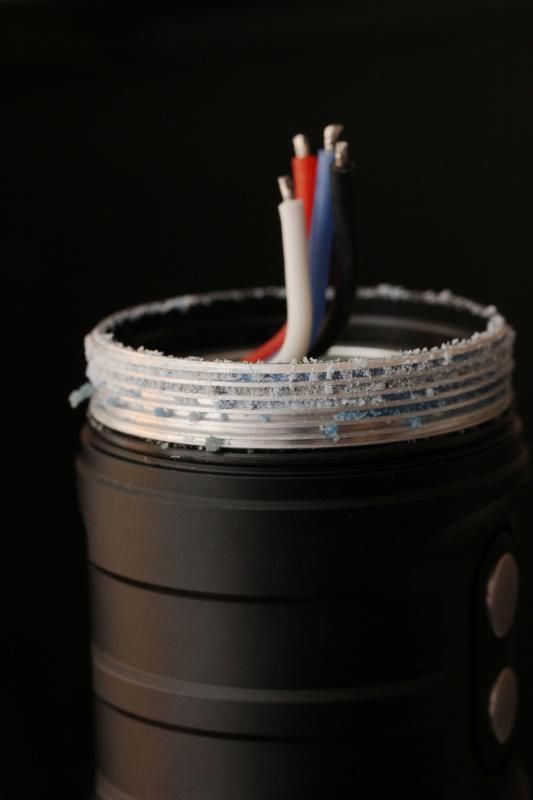
Yeah they were!
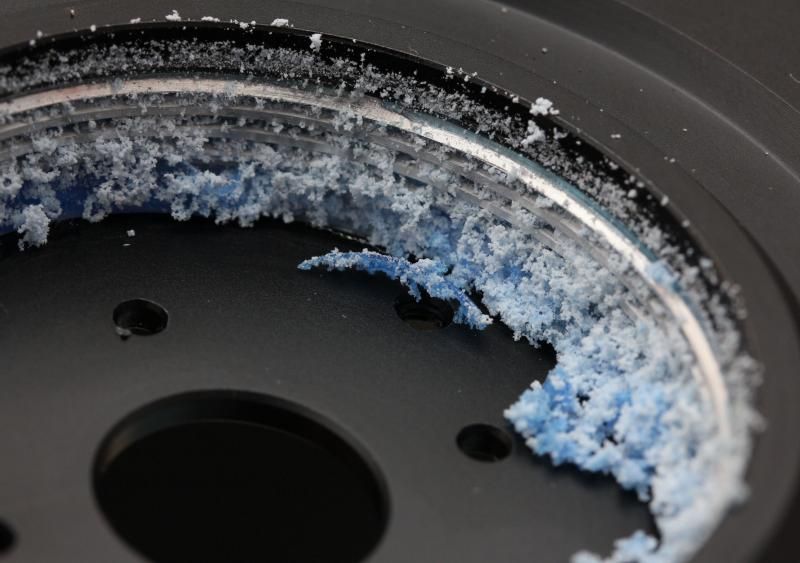
Since the sense resistors were on the top side of the driver, I never opened it up further.
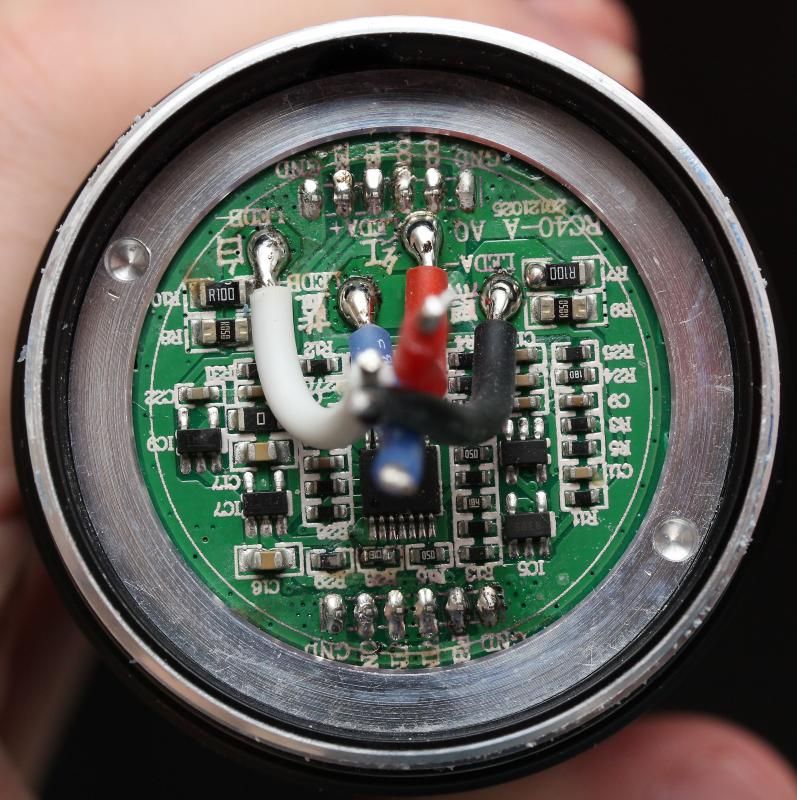
One of my first test setups with resistors.
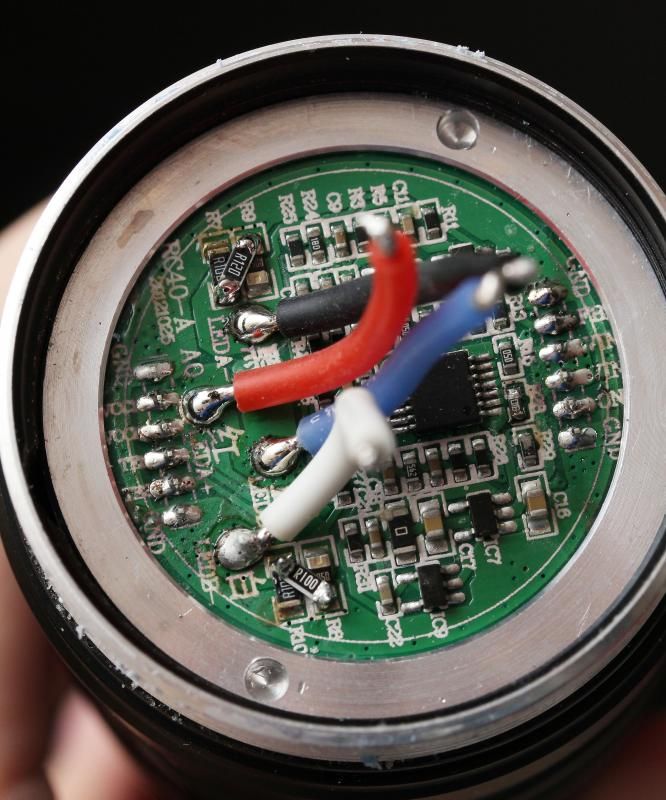
Mod notes:
This is my personal notes, so they may not always be super easy to follow. There are different groups of resistors on the light, and two sets of output wires. A and B. In some cases I only measured on one side.
The notes below show emitter amps and mode spacing on the stock light with low battery voltage. Then you can see it with two different resistor mods. Which gave lower output due to low battery. Then I charged the battery, and saw around 3,9A to each emitter depending on the resistor value that was added.
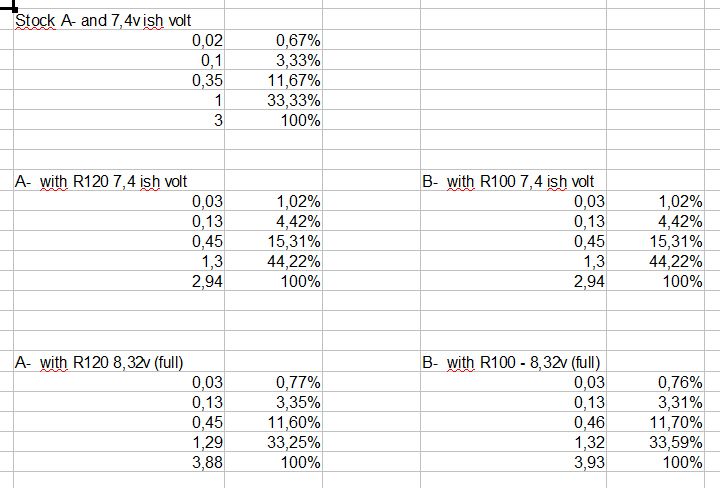
I was able to peak at 4,75A to two of the emitters.
When attempting to get 4,75A to all four emitters output was lower. A timed amp drop test showed it was sinking like a rock down to about 4,2A. Based on that I considered 4,2A to be the absolute max.
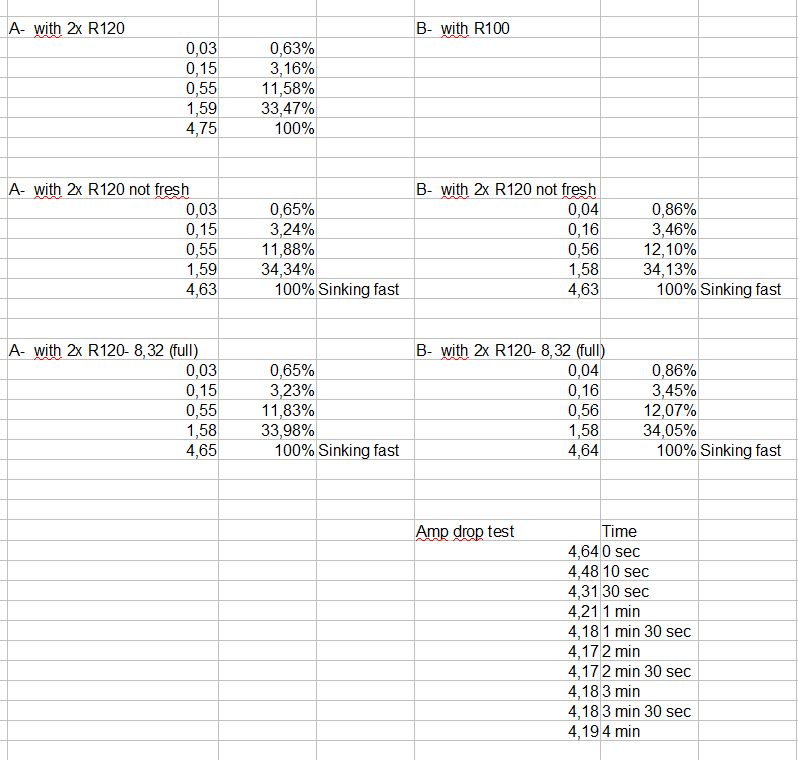
I decided on using a single R100 despite that it only had showed 3,93/3,94A.
Reasons being, I did not have an R090 or R080, I did not want to bother swapping all resistors in order to give me a combo that gave me above 4A with the resistors I had available. I wanted to be on the safe side, and if XM-L2s are more demanding I might have some headroom with going for 3,9A instead of 4A+.
A single amp drop test showed good regulation.
I then decided on just adding a single R100 on both sides.
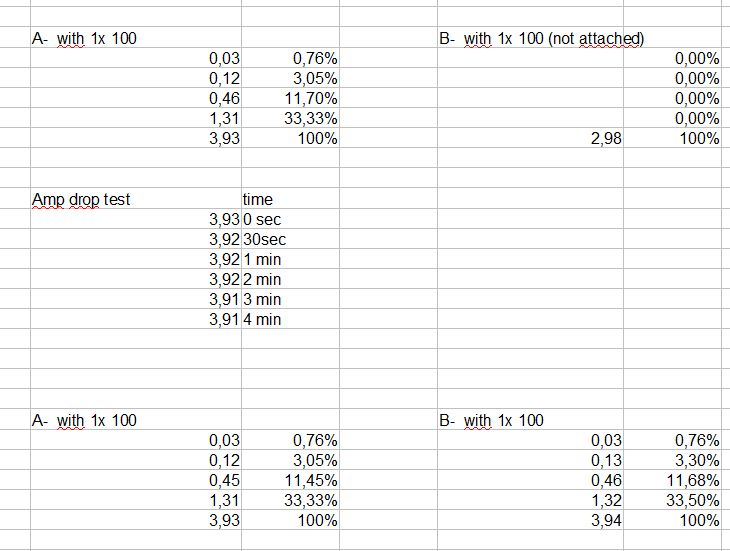
Time for a proper amp drop test from full battery to empty. Summary:
I got 0-20 min with proper regulation and the full output of the resistor mod.
From 20-56 min output was dropping down towards the stock 3A.
From 56-67 min output is falling quickly.
From 67,5 min it does a stepdown down to around 0,1A.
Ten minutes later it did another stepdown that was even lower (below 0,1A, not below 0,0 as my notes say:D ) It then did 3 warning blinks every 5+ minutes.
I suspect that you are not supposed to use the light more then, but you get the ability in case of an emergency.
I continued this test for a long time. About 1 and a half hours of this super low output mode I decided to check battery voltage after a total runtime of 2 hours and 45 minutes on Turbo/max output setting. Battery pack showed 5,16V (or about 2,58V on each cell). Probably beyond what is healthy for the 2600mAh cells in the battery pack, so i stopped the test there and charged the battery.
On some other Fenix lights (TK61 and TK75) I have tested there have not been a cut-off based on testing with a powersupply, so I always recommend protected cells in those. Im not sure if the RC40 battery pack have protection for low voltage, it did not seem like it, and I did not want to discharge it any further..
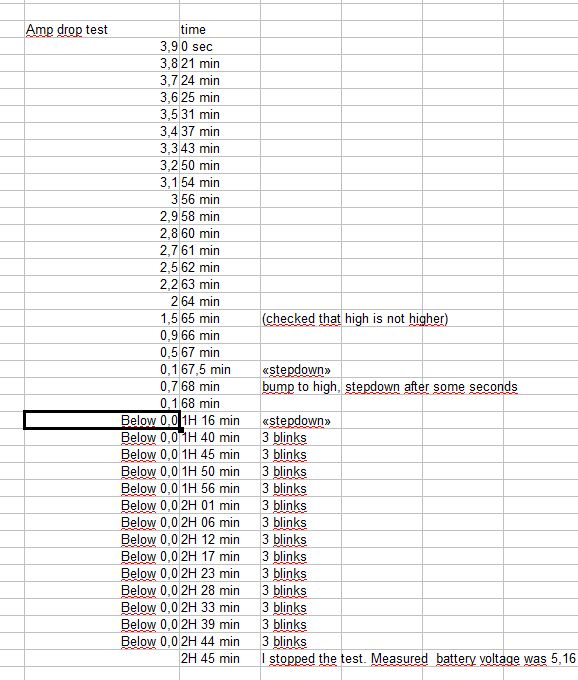
Light output numbers:
Measured by me. I don't claim accuracy.
Stock:
3591 Lumen, 134kcd
Resistor modded and stock emitters:
4326 Lumen, 162kcd
I have basically increased current by 30% (from 3A to 3,9A). Both lumen and lux have increased with about 20,5% from stock.
Resistor modded and with 4x XM-L2 U3 1A:
Coming later?? Theory says 22% increase IF i get similar emitter current. So I could get up towards 5277 lumen and 197kcd?
Resistor modded and with XM-L2 U3 1A, 2 de-domed:
Coming later??.. maybe.. Could give me up towards 5013 lumen and 285kcd. Maybe...
Disclaimer: This light does not want to open up easily. Mod at own risk. Have fun!